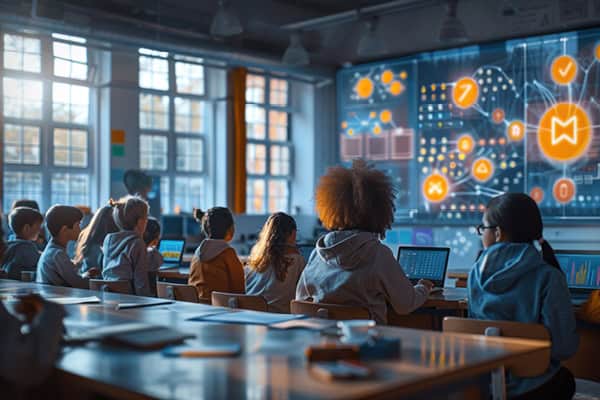In the U.S, teachers are outnumbered on average 16 students to 1 teacher in the classroom (though this number can be as high as 23 to 1 in states such as California), writes Bill Salak in eSchool News. He is CTO and COO of Brainly, a service offering homework, and explanations personalized with AI. This post originally appeared on Brainly’s blog. Today, teachers are under more pressure and are working more hours than ever before – an average of 52-58 hours per week.
What can we do about it?
The never-ending stream of curriculum changes and standardization is one issue. When combined with high student to teacher ratios, it is extremely challenging for teachers to give individualized support for students.
Teachers must set a pace for their classes that aims to hit specific lesson delivery targets during the school year to hit curriculum goals, Students often struggle individually with different topics and lessons and cannot always keep pace with the rest of the class.
The teacher shortage, smaller class sizes, or increased support in the classroom aren’t viable solutions to the challenges teachers face. Enter generative AI (GenAI).
It has become evident that if used correctly, AI can potentially play a pivotal role in improving both teachers’ and students’ school experiences.
Our work with teachers identified six areas where AI can have the most impact in the classroom:
1) Data analytics for preventative intervention: By analyzing patterns in students’ grades, attendance, participation, and other behavioral indicators, AI algorithms can predict potential academic risks and learning disabilities. Teachers can intervene early with tailored strategies so minor setbacks don’t become major obstacles.
2) Improved personalization, collaboration, and gamification features: AI can customize learning experiences corelating to each individual. Based on skills and interests, AI can facilitate collaboration among students in different locations through intelligent matchmaking. Gamification features, enhanced by AI, can make learning engaging and enjoyable by incorporating game elements into educational activities. Rewards, challenges, and interactive storytelling are motivators.
3) Immersive scenario-based learning: Realistic and interactive scenarios for students to explore can be generated by AI. Students in simulated environments practice language skills, solve complex problems, conduct experiments, or understand historical events as if they were there. Comprehension and retention are enhanced by this immersive approach that provides practical, hands-on experience and allows students to learn by doing.
4) More intelligent tutoring systems: Personalized instruction tailored to each student’s learning style and pace is possible through AI-driven intelligent tutoring systems. Systems assess a student’s current level of understanding and adapt in real-time to provide challenges that are neither too easy nor too difficult. Students are guided through complex concepts, provide hints, and explain solutions in multiple ways — mimicking the benefits of one-on-one tutoring.
5) Automated grading and feedback: Teachers’ time evaluating assignments and exams can be reduced through automated grading systems powered by AI. Systems can provide personalized feedback on students’ work, pinpoint areas of strength and suggest improvements where there are weaknesses. Students to quickly understand and learn from mistakes. Teachers are free to focus more on in-class instruction and individual student support.
6) Virtual assistants for teachers: From scheduling and communication to the organization of educational materials and student records, AI virtual assistants handle numerous administrative tasks for teachers’ needs. Teachers can devote more time to engaging students, planning innovative lessons, and focusing on professional development by automating routine tasks
The real-world impact of these new tools and capabilities will be determined by how they are used, integrated, and adopted by teachers and schools. The fundamental need for teachers and students to do apply the human touch is far from eliminated. Ultimate success is determined, as always, by teachers who care about their profession and their students and who motivate students to learn. These new tech products have the potential to help teachers focus on what they do best and to enable students at all levels to maximize their potential.
When will these tools become ubiquitous in schools?
The rise of AI will drive a recalibration and serious reconsideration of what we’re teaching children, says Salak. Some of the things we’ve held as education staples may no longer be relevant in the workforce of the future. Education is a system with a purpose and we must adapt that system as the world changes. We may even have to redefine the purpose of education, Salak believes.
When the time is right, a thoughtful redefinition of the purpose of education and how our education systems serve that purpose will happen. AI will force that conversation – for the good of teachers, students, and society, he believes.
eSchool News





